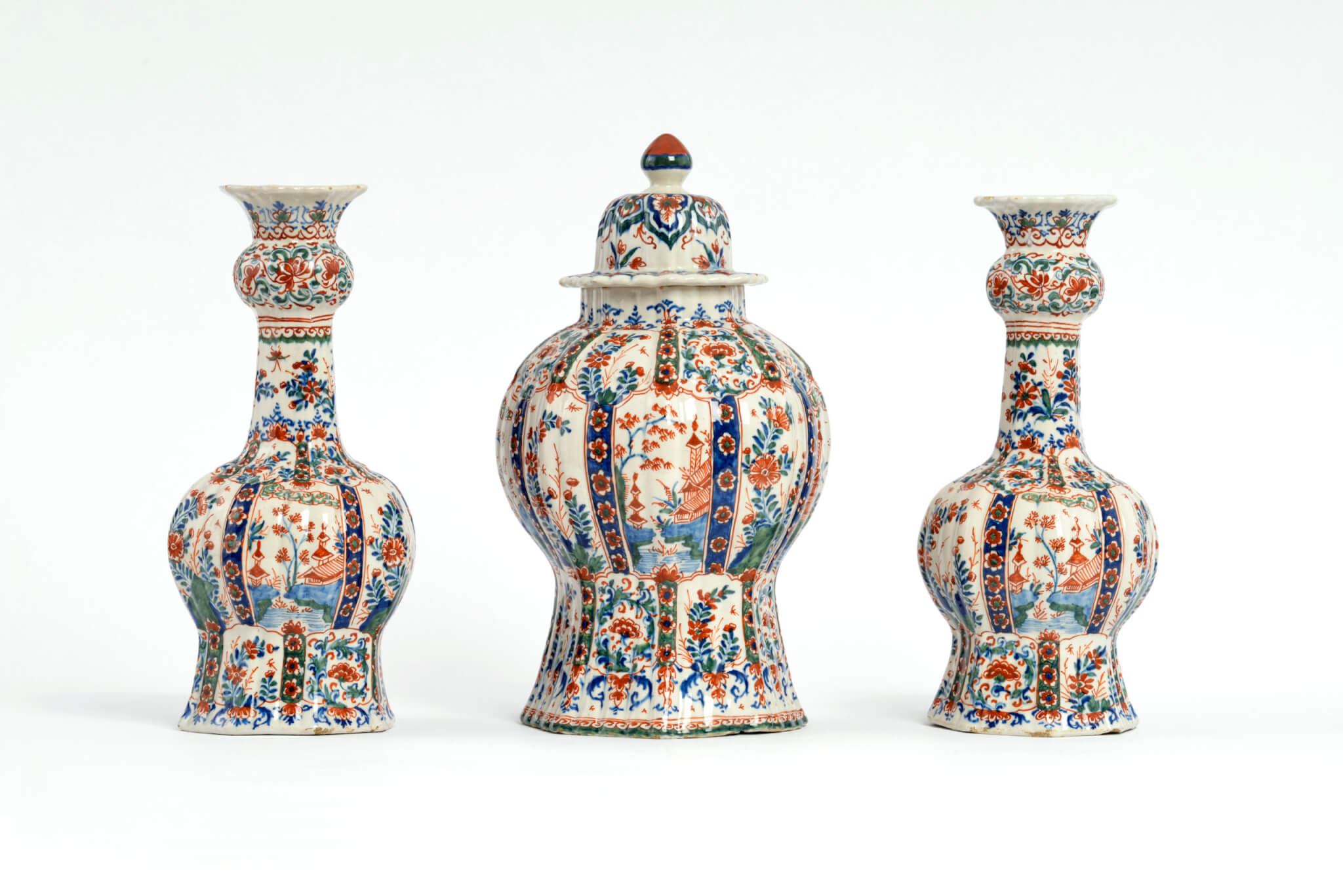D0852. Cashmere Palette Garniture
€9.500,00
Delft, circa 1710
Marked LVE 8 0 iP in iron-red on the central vase
Comprising a baluster-form vase and cover and a pair of baluster-form bottle vases, each painted in the cashmire palette with either eight or six panels of pagodas in a landscape alternating with flowering chrysanthemums and separated by blue-ground bands of iron-red blossoms, the flaring foot and shoulder with further floral panels separated by green-ground bands of blossoms, the knop on the bottle necks with a flowering vine border, and the cover with foliate lappets around the dome and scalloped rim beneath the teardrop knop.
Dimensions
Heights: 30.2 and 27.1 cm. (11 7/8 and 10 11/16 in.)
Out of stock
Description
Note
The delicate grand feu decoration on this garniture was given the descriptive title ‘cashmere’ for its likeness in color, and exotic, dense motifs to the fine woolen shawls that were imported from India and worn by high-class European ladies. As can be seen on the present vases, the earthenware of this category has a reeded surface with a color scheme of blue, red and green. Although the Delft pieces were named after the fashionable textiles, the Delft potters were in fact inspired by the Chinese famille verte porcelain wares of the Kangxi period (1662-1722), which arrived in Europe at the end of the seventeenth century. Delftware painters also looked beyond China for further inspiration in designing cashmere pieces.
One such design source was the French baroque style that reigned during the age of King Louis XIV.
Characteristic for this is the delicate use of arabesques and whimsical grotesques that originally derived from the Renaissance, and the combination of foliage with human and animal forms that prefigured the Rococo movement. Moreover, multiple garlands of flowers, draperies, scrolls, and pendants were added in order to form magnificent embroidered motifs. Since the production of these elaborate reeded pieces was probably too expensive, the cashmere palette enjoyed a brief, yet widespread success during the first half of the eighteenth century.




